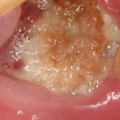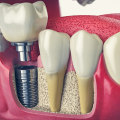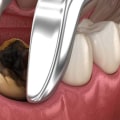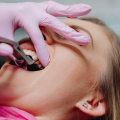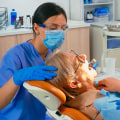Tooth extraction is a common dental procedure that involves removing a tooth from its socket in the jawbone. Before the extraction, your dentist will apply local anesthesia to numb the area around the tooth so that you don't feel any pain. The dentist will then use an instrument called an elevator to loosen the tooth from the gum and tweezers to remove it. Common side effects after tooth extraction include bleeding, swelling, and discomfort. Your dentist will provide you with instructions on how to manage your healing process.
If you have dental anxiety or other concerns about the procedure, sedation may be an option. Let your dentist know if you have a history of dental anxiety and they can discuss your options with you. Anesthesia must be administered before the extraction, so please contact your dentist for more information. The dentist will numb the area surrounding the affected tooth and then gently extract it. If needed, they will also suture the area.
To help it clot or slow bleeding, it may help to chew on the gauze gently. If you experience a fever of 38 degrees Celsius (100.4 degrees Fahrenheit) or higher, drainage (pus) around the extraction site, or severe pain that doesn't improve with medications after having a tooth extraction, contact your dentist immediately. If you have a severely decayed or cracked tooth, dental trauma, or tooth clumping, you may need to have a tooth extraction. In some cases, the dentist may need to make incisions in the gums to access the tooth, especially if it is badly decayed or has broken at the gum line. If extracting your tooth is more complicated, you may need to have a general anesthetic which will put you to sleep. However, sometimes extracting a tooth is the best way to get rid of an infection and restore your smile and life back to normal.
Dentists and some dental specialists such as oral surgeons and periodontists can perform tooth extractions. Ask your dentist to explain any alternatives to tooth extraction and what their benefits and risks are. The dentist will place a piece of gauze over the tooth extraction site and ask you to chew on it gently in order to control bleeding.
